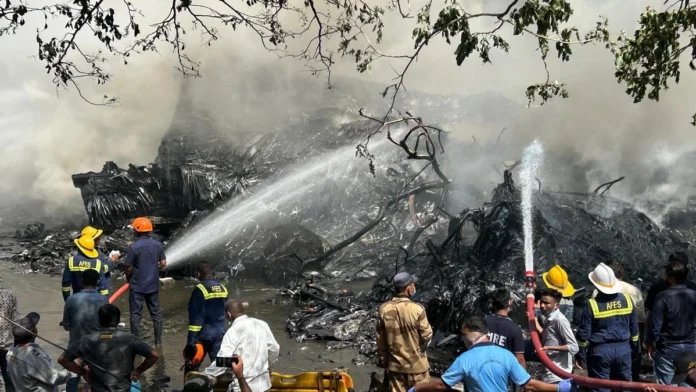Key Initial Revelations from the Recorders
-
RAT deployment confirms dire failure
Both black boxes indicate the Ram Air Turbine (RAT) activated shortly after takeoff—a sign of dual engine or hydraulic failure, triggering its automatic deployment en.wikipedia.org+15people.com+15latimes.com+15. -
Mayday call corroborates engine loss
The cockpit voice recorder preserves Captain Sabharwal’s frantic call — “Mayday… no power” — alongside “thrust not achieved”, confirming total engine failure within 30‑40 seconds timesofindia.indiatimes.com+8apnews.com+8en.wikipedia.org+8abcnews.go.com+5en.wikipedia.org+5economictimes.indiatimes.com+5. -
Engine/thrust failure seems central
Investigators now see a thrust loss during initial climb as a likely root cause. The inability to retract landing gear also points to hydraulic problems economictimes.indiatimes.com+15reuters.com+15thescottishsun.co.uk+15en.wikipedia.org. -
Data sent overseas for analysis
Due to post-crash heat damage, the recorder data is being processed in the US, with joint input from Indian, UK, US, Boeing, and GE experts abcnews.go.com+2thesun.co.uk+2economictimes.indiatimes.com+2theguardian.com+6apnews.com+6abcnews.go.com+6.
📊 Why This Is a Breakthrough
-
The combination of RAT deployment and power-loss call forms the strongest evidence yet that a mechanical failure, not human error or weather, triggered the disaster people.com+1thescottishsun.co.uk+1.
-
These clues align with independently reviewed CCTV, which shows the aircraft climbing then descending flat before the crash—suggesting it never gained full thrust reuters.com+1timesofindia.indiatimes.com+1.
🛠️ What Comes Next
-
Flight data timeline analysis: Experts are reconstructing cockpit voice and flight parameters in sync.
-
Preliminary report due within 3 months from India’s Ministry of Civil Aviation youtube.com+3en.wikipedia.org+3theguardian.com+3wsj.com+5apnews.com+5en.wikipedia.org+5.
-
Global safety directives: Immediate inspections of all Air India Boeing 787s and engine systems have been ordered economictimes.indiatimes.com+6wsj.com+6reuters.com+6.
🧩 Bottom Line
The black boxes did more than speak—they painted the first accurate picture of why a Boeing 787 could crash in clear skies so soon after takeoff. A near-instant engine/hydraulic breakdown appears confirmed, shaping the direction of the ongoing inquiry and future aviation safety improvements.
